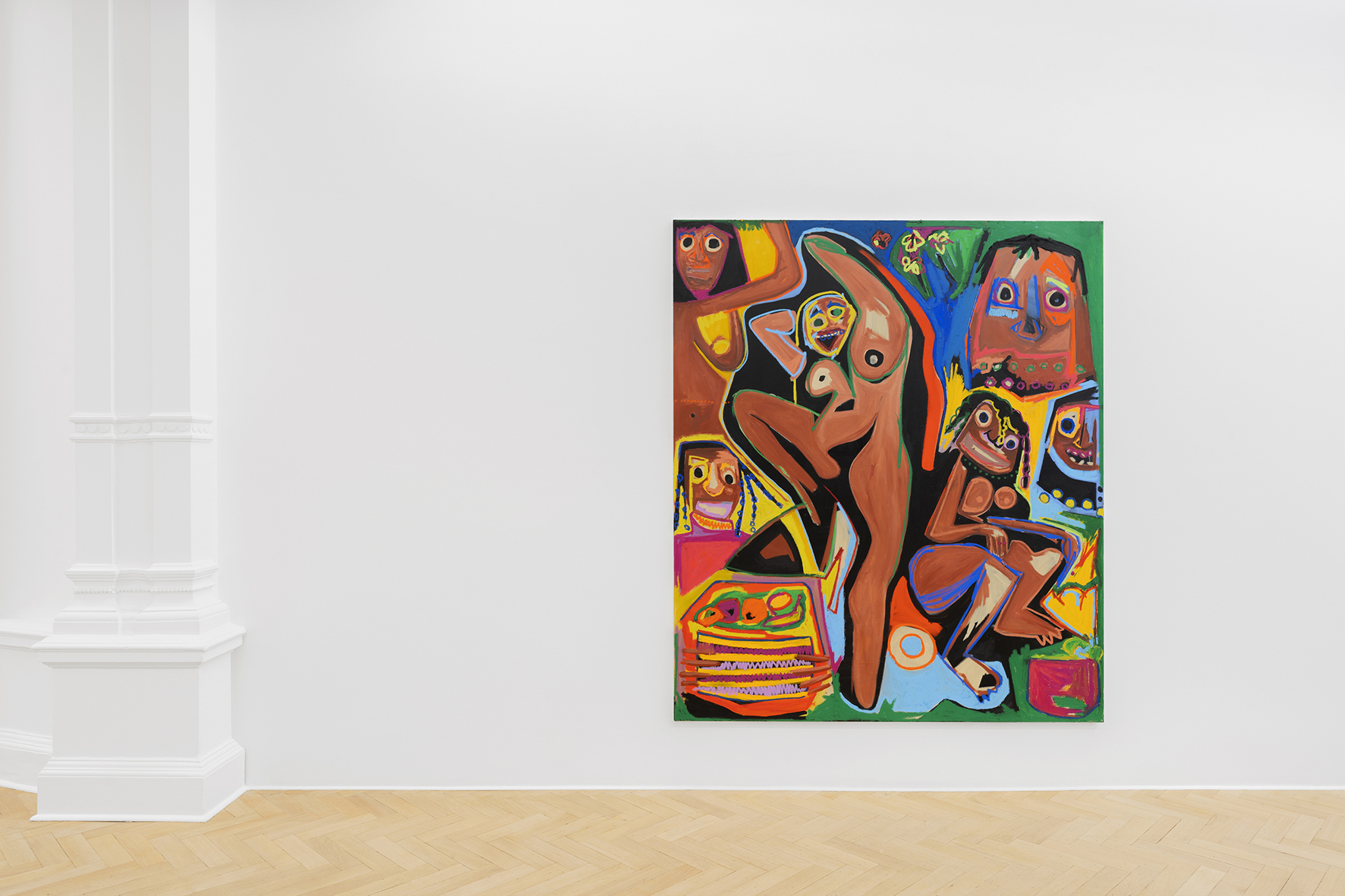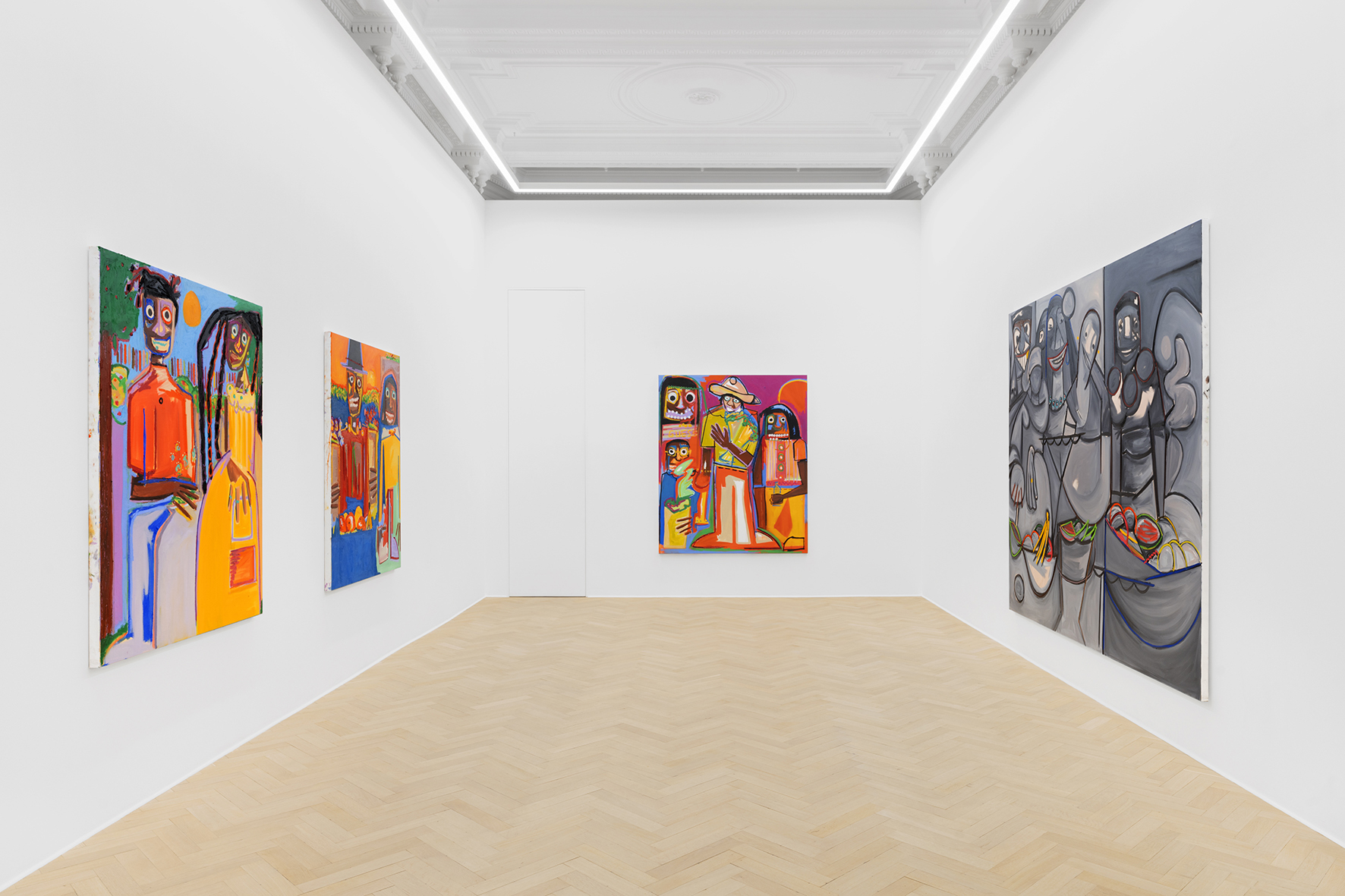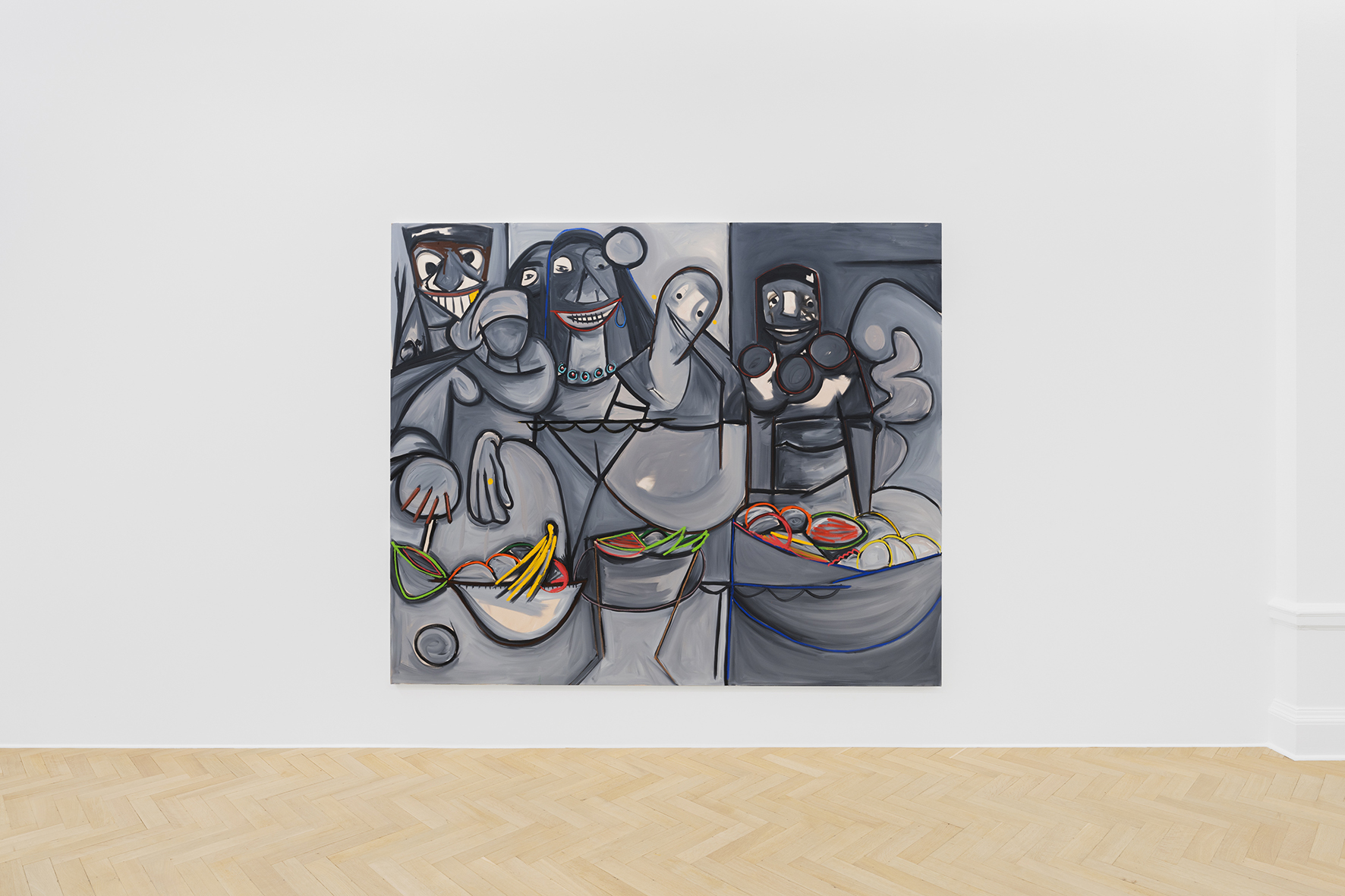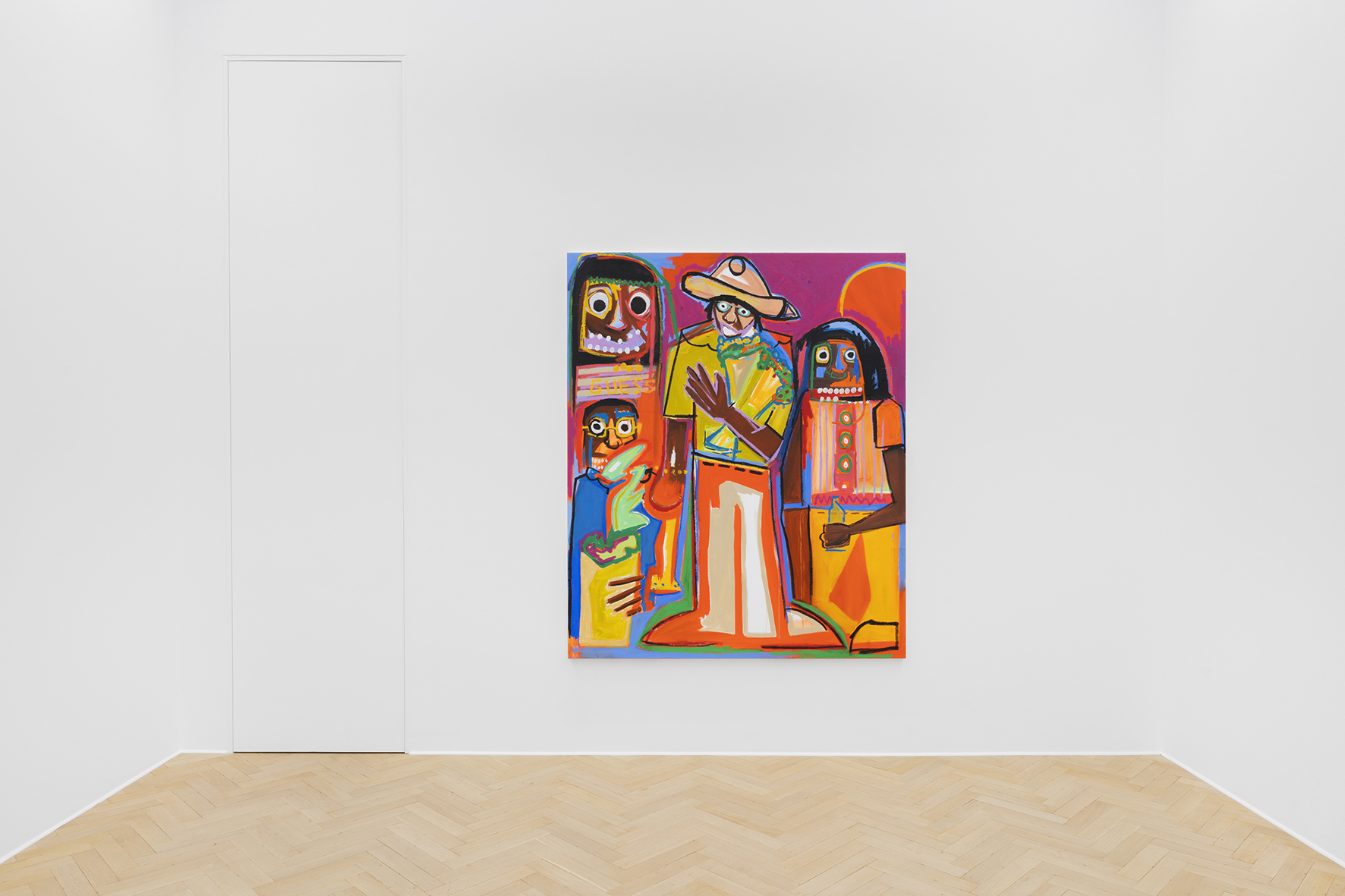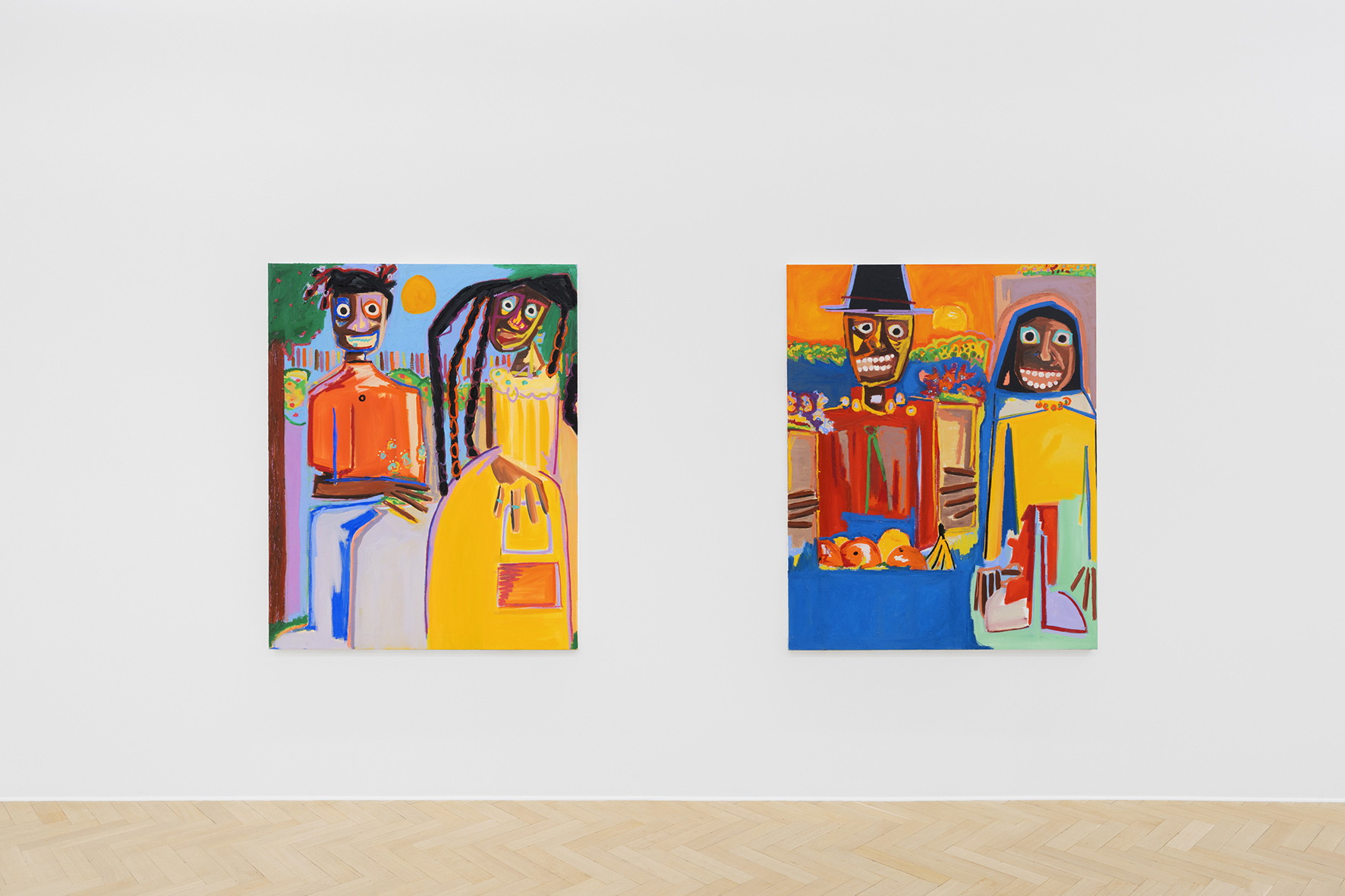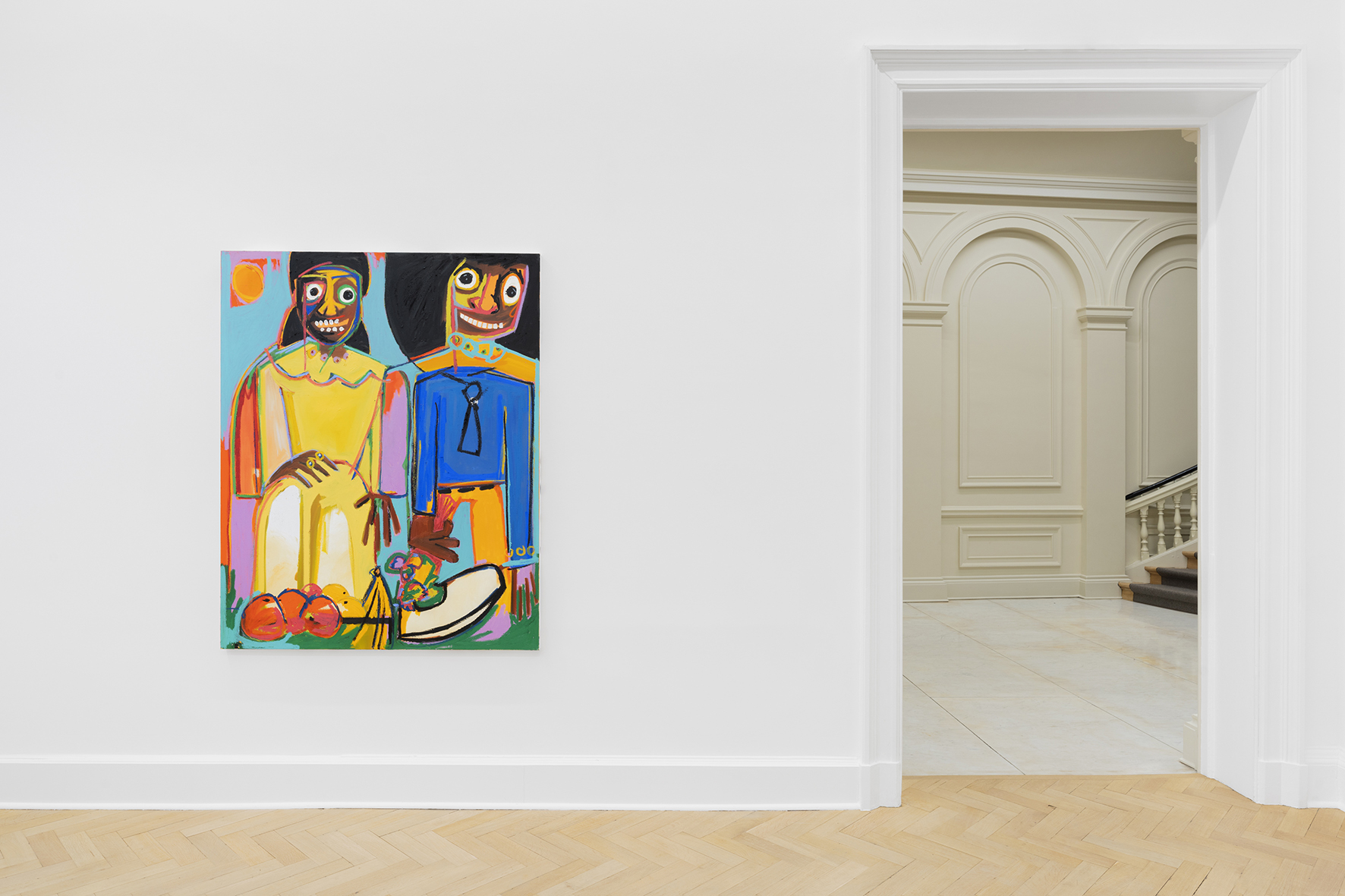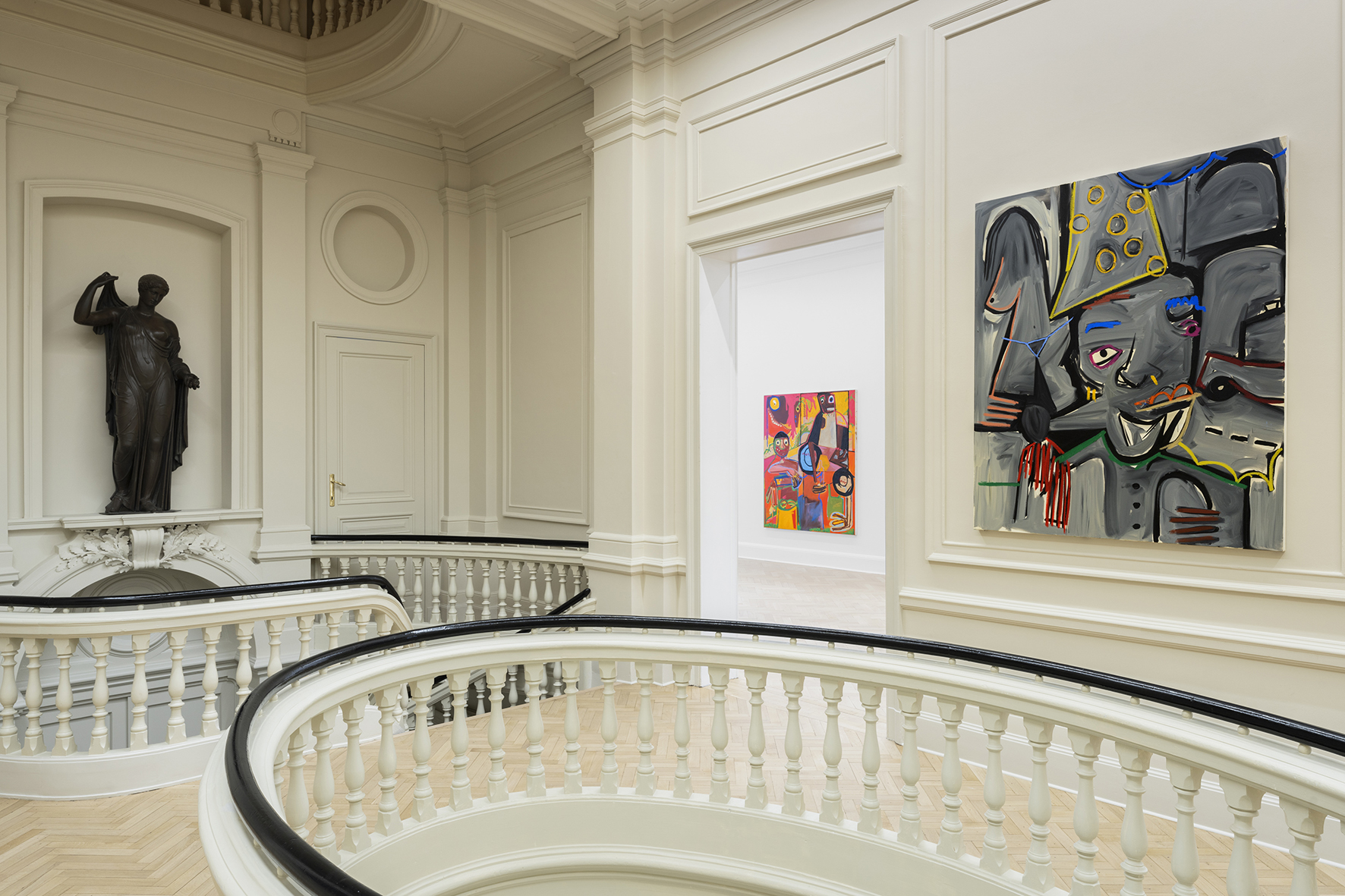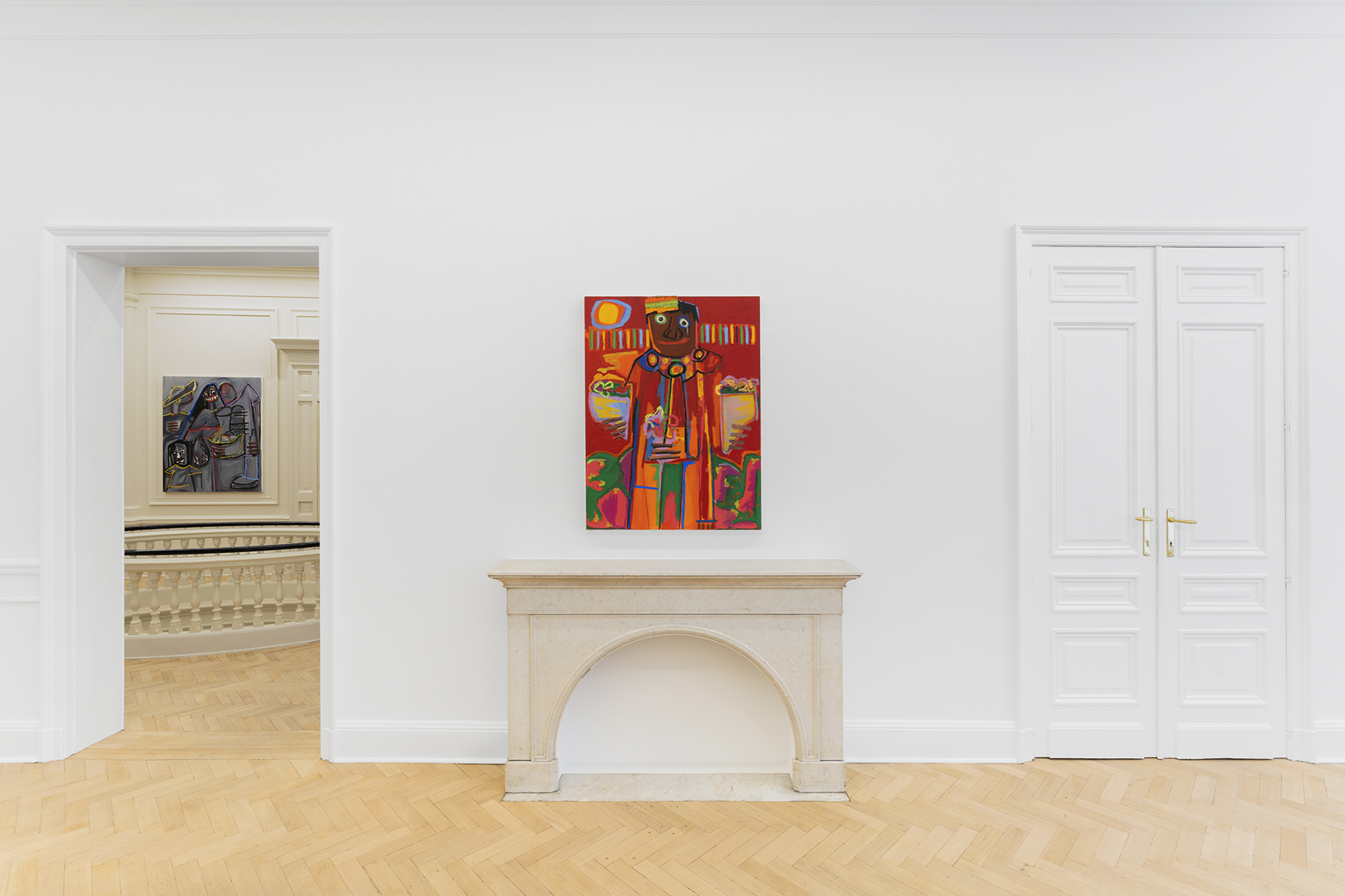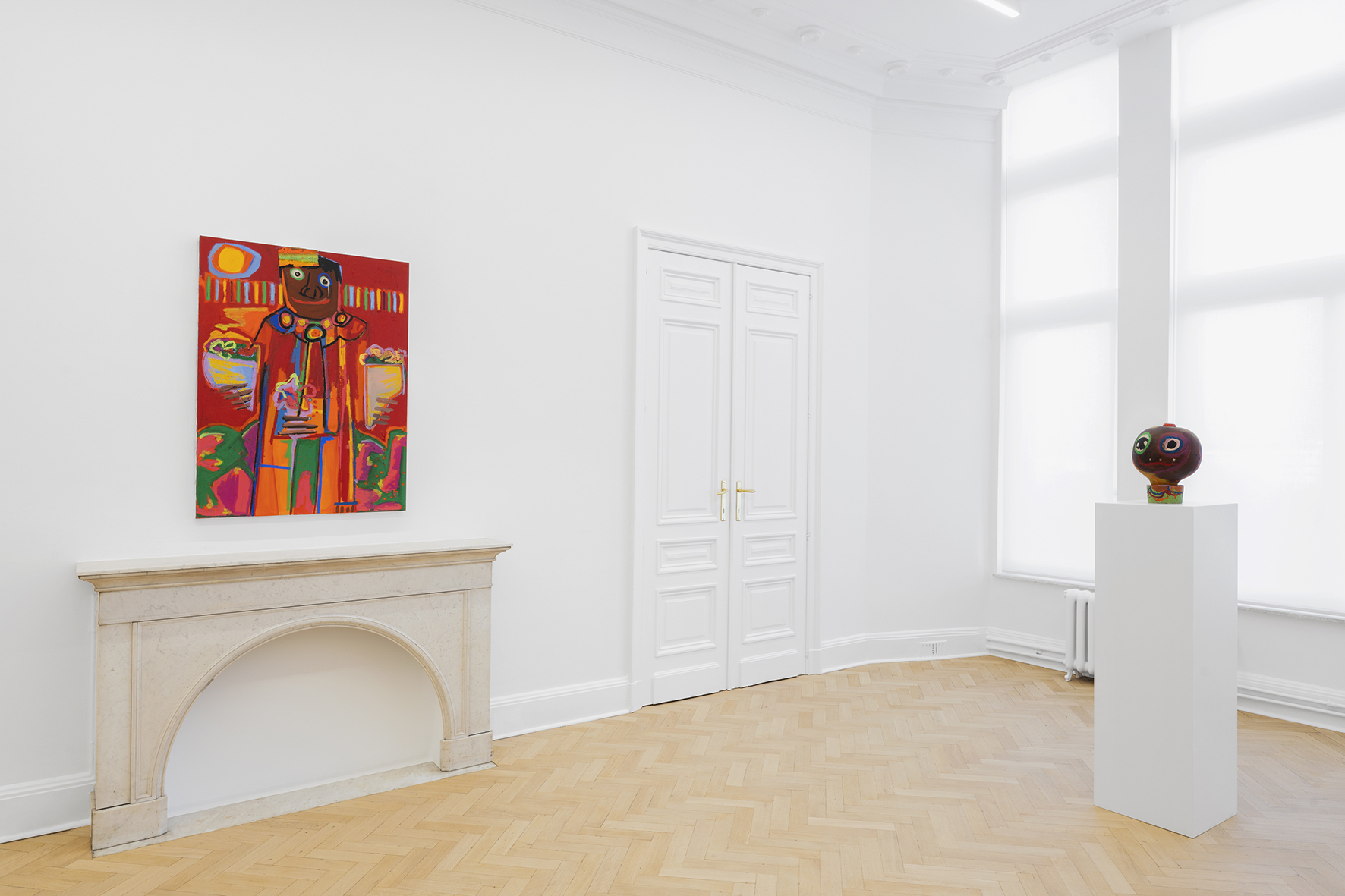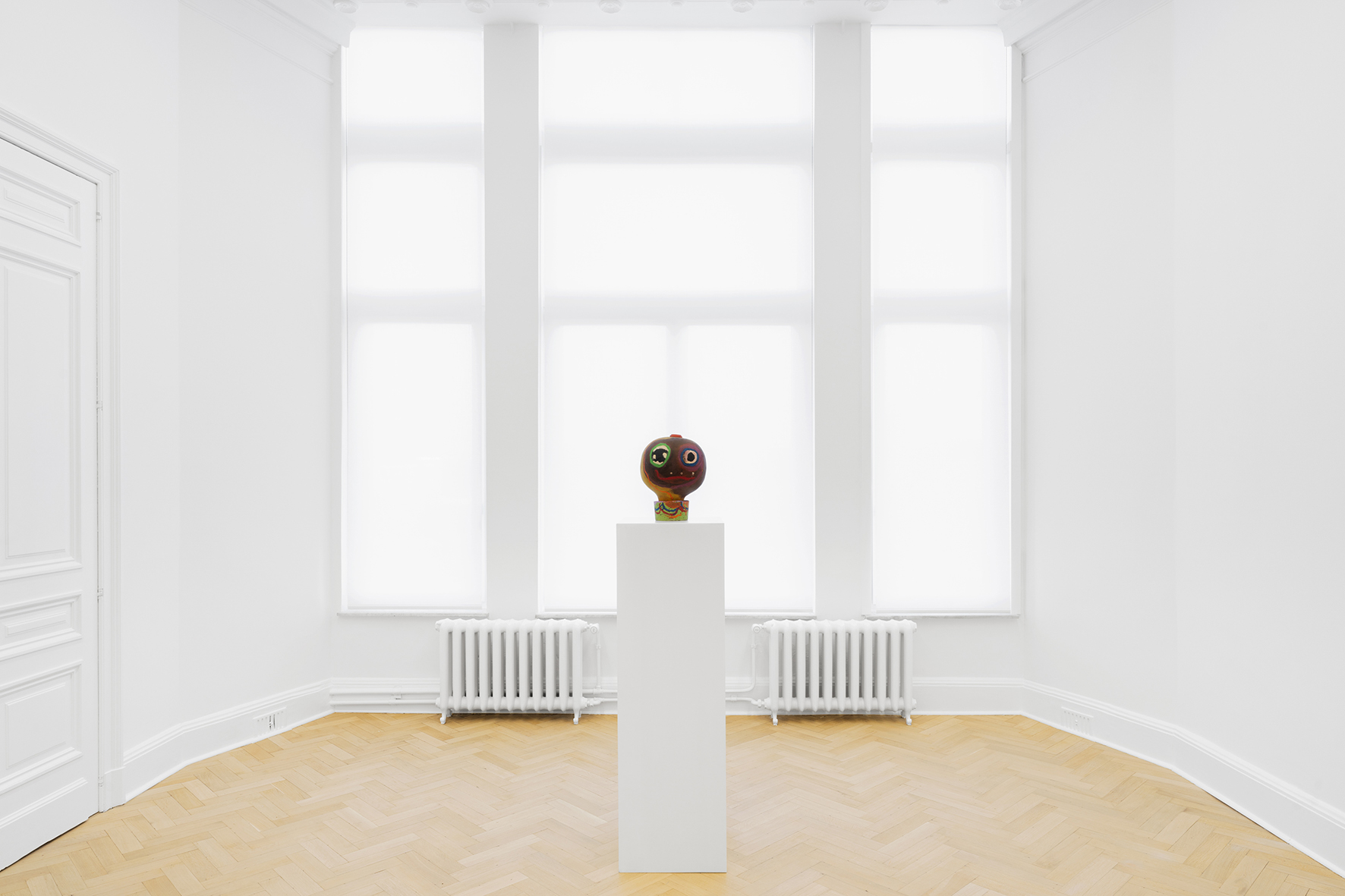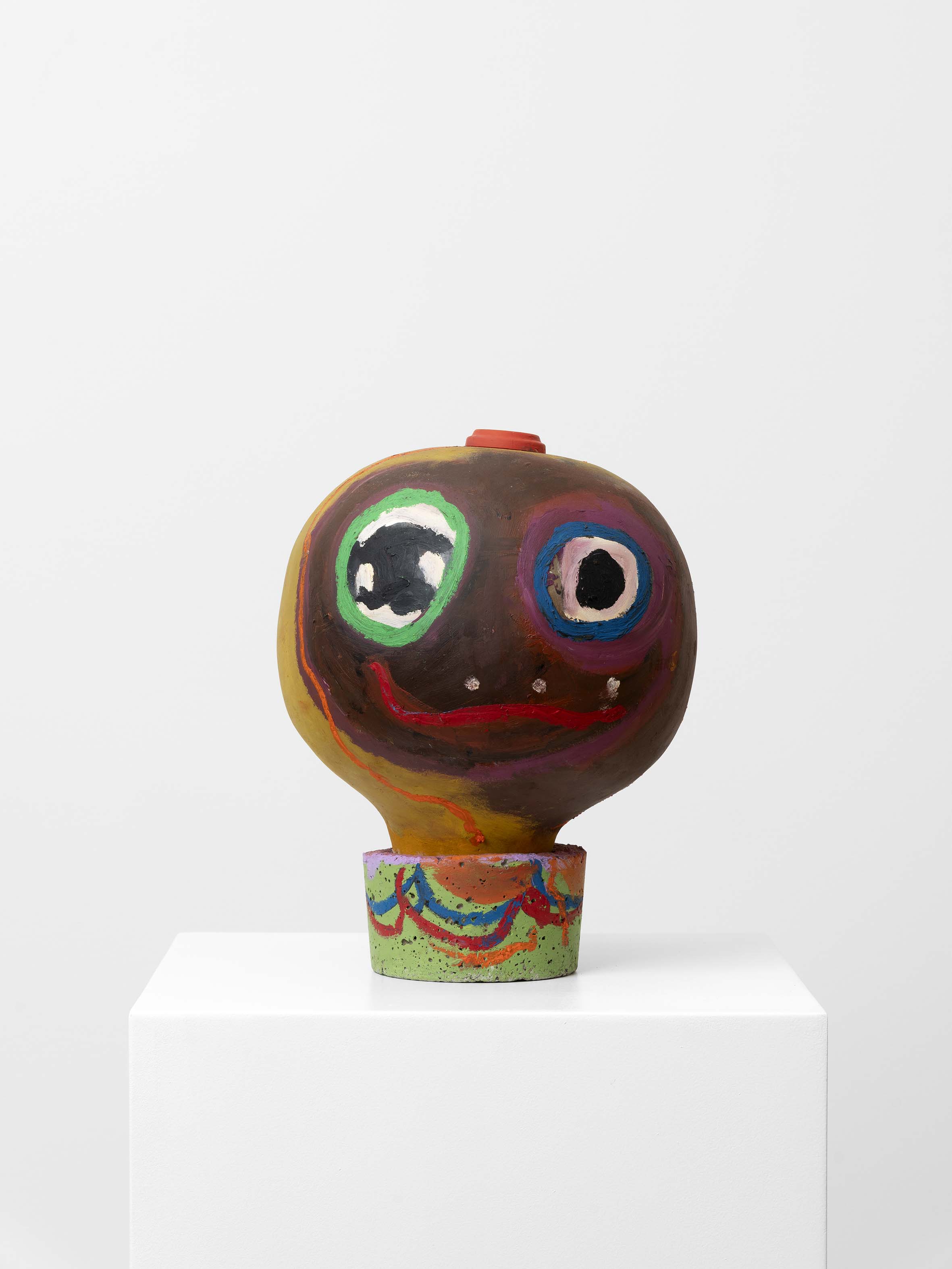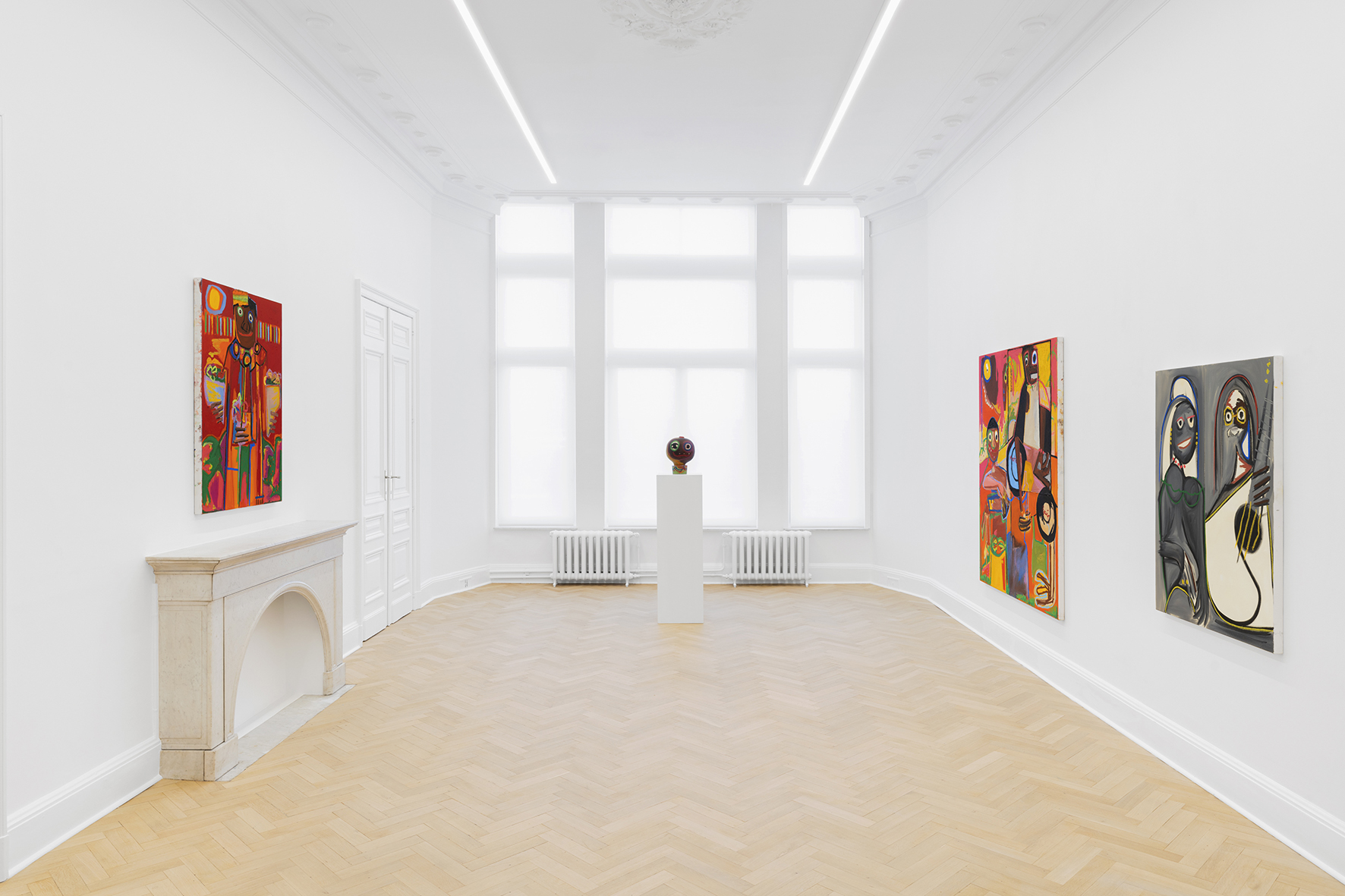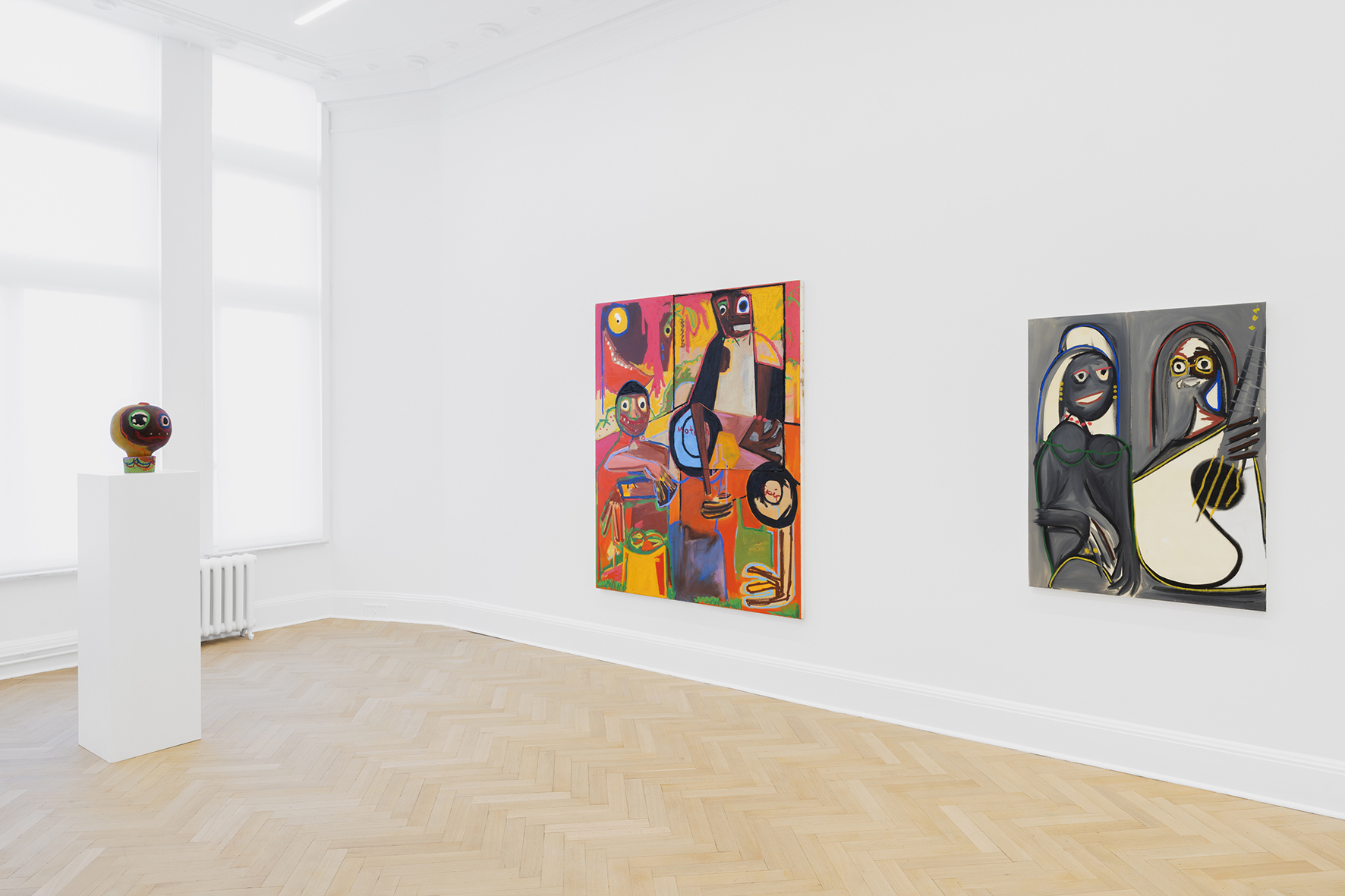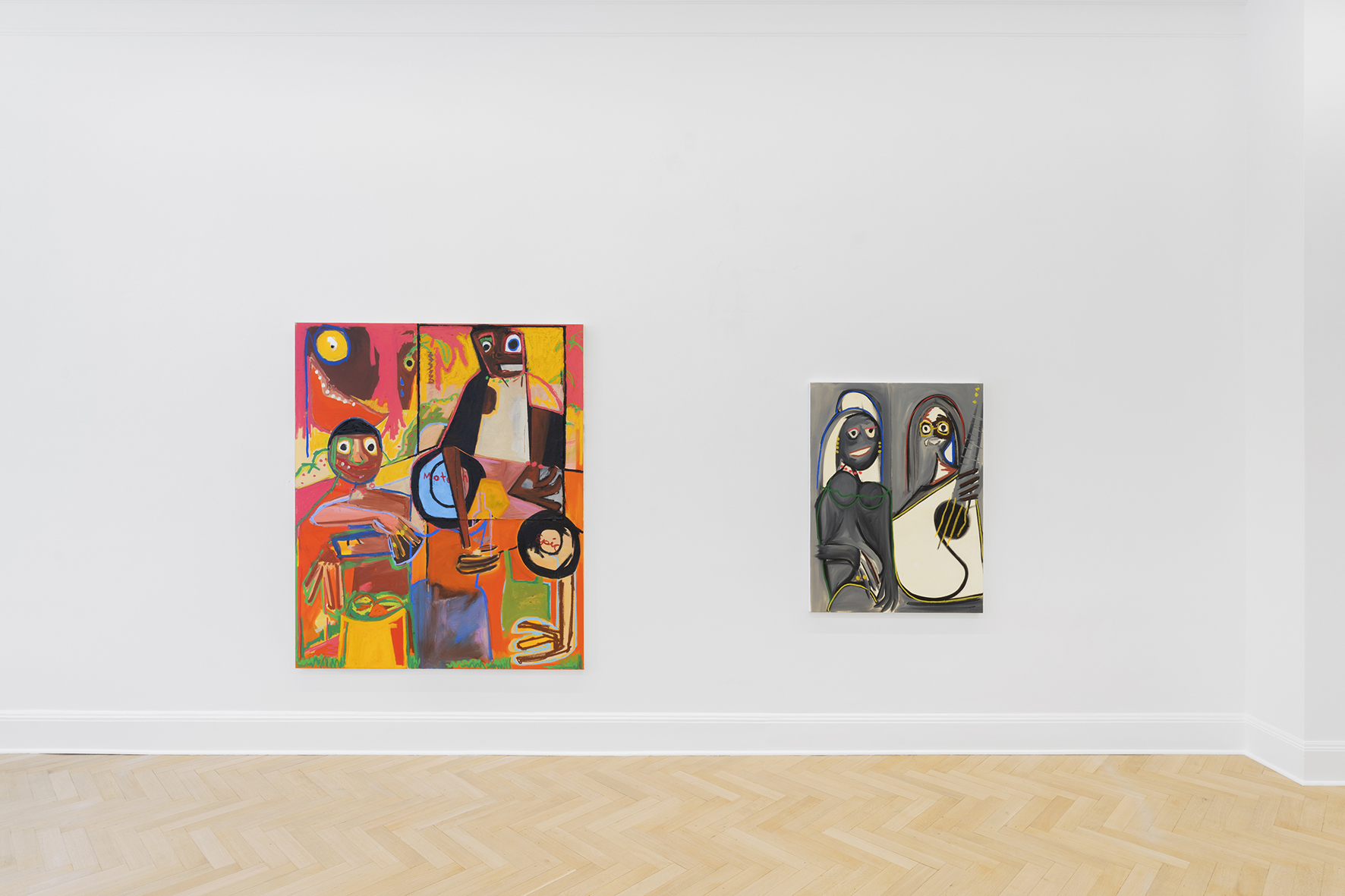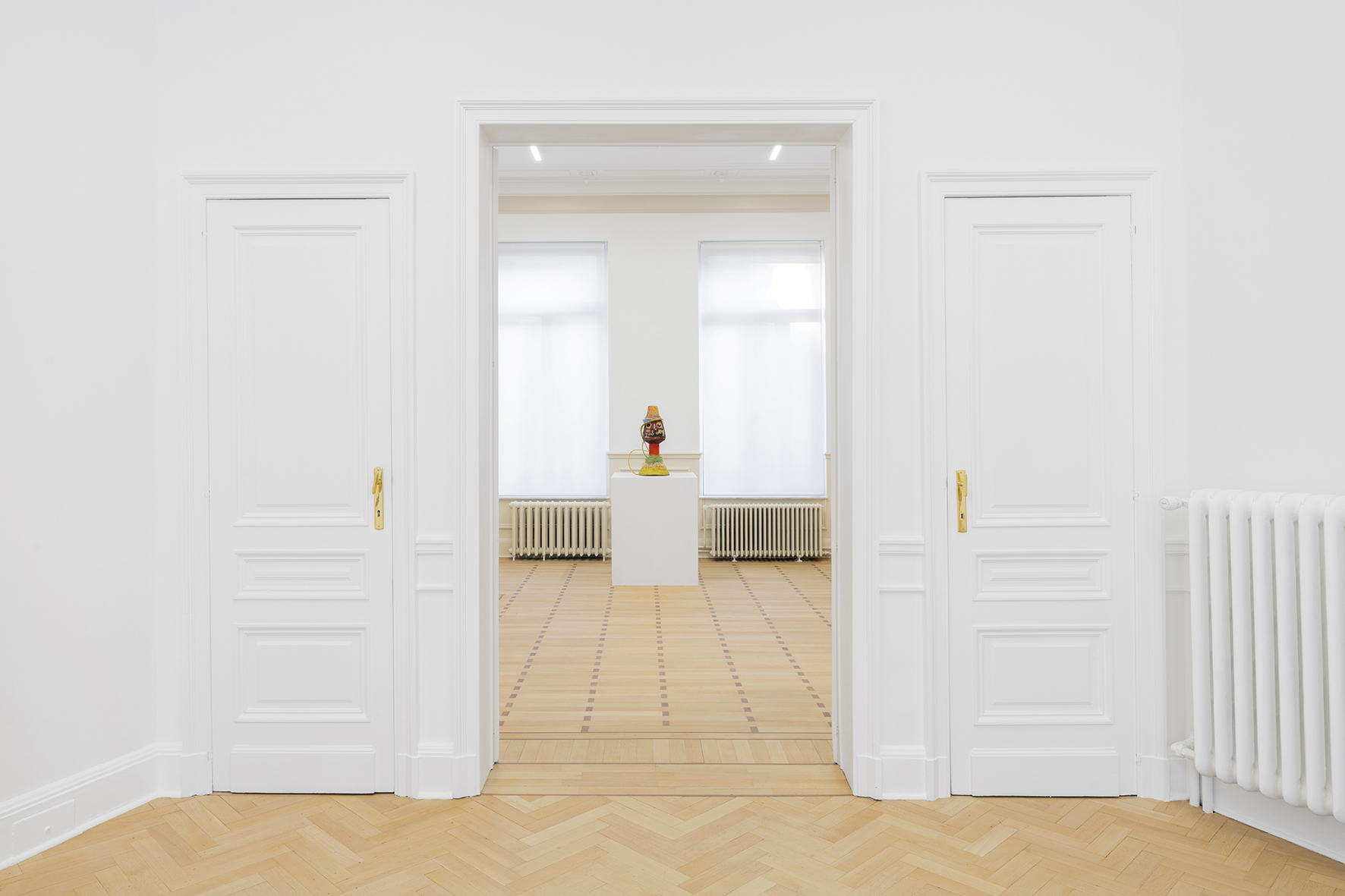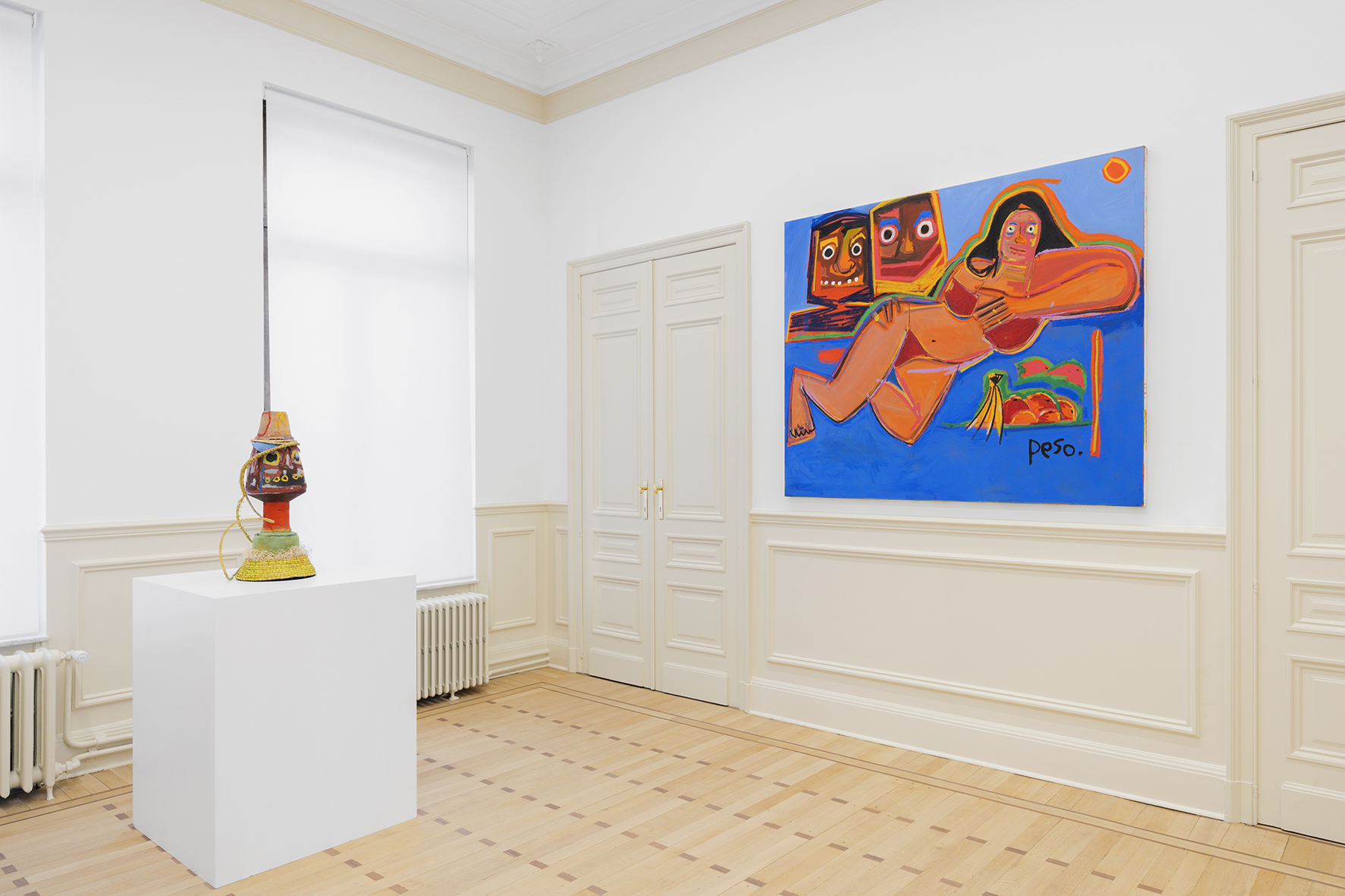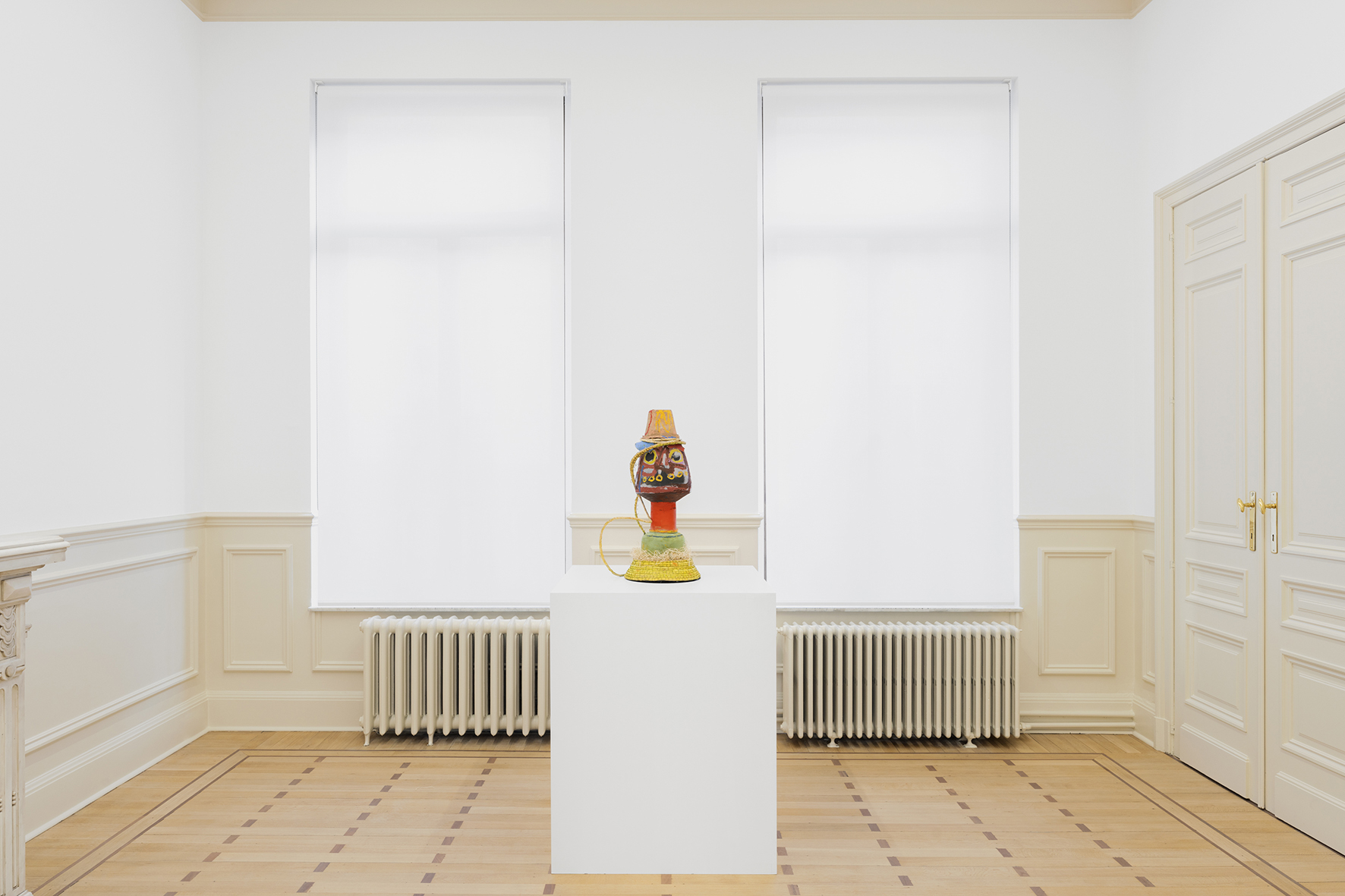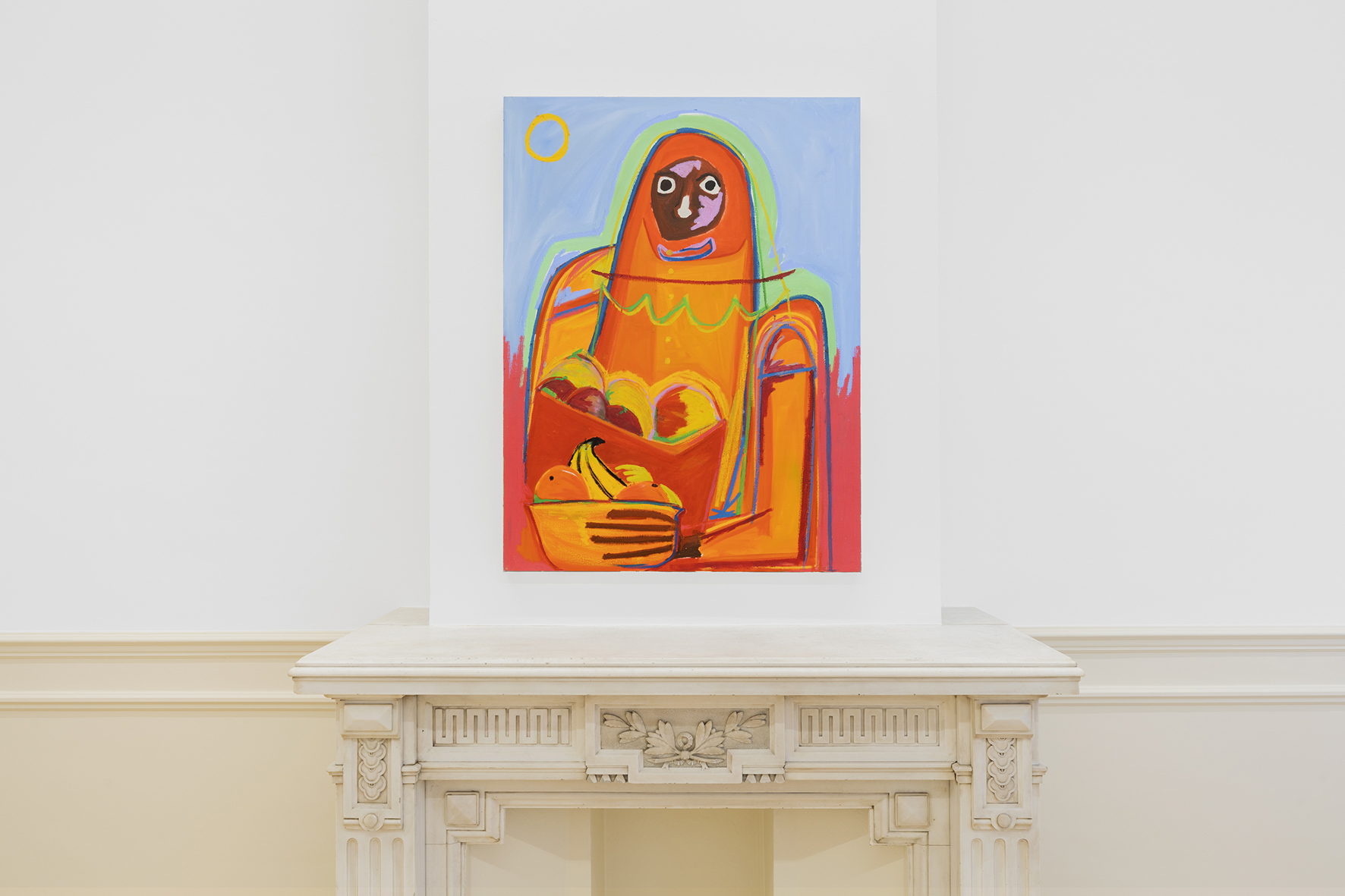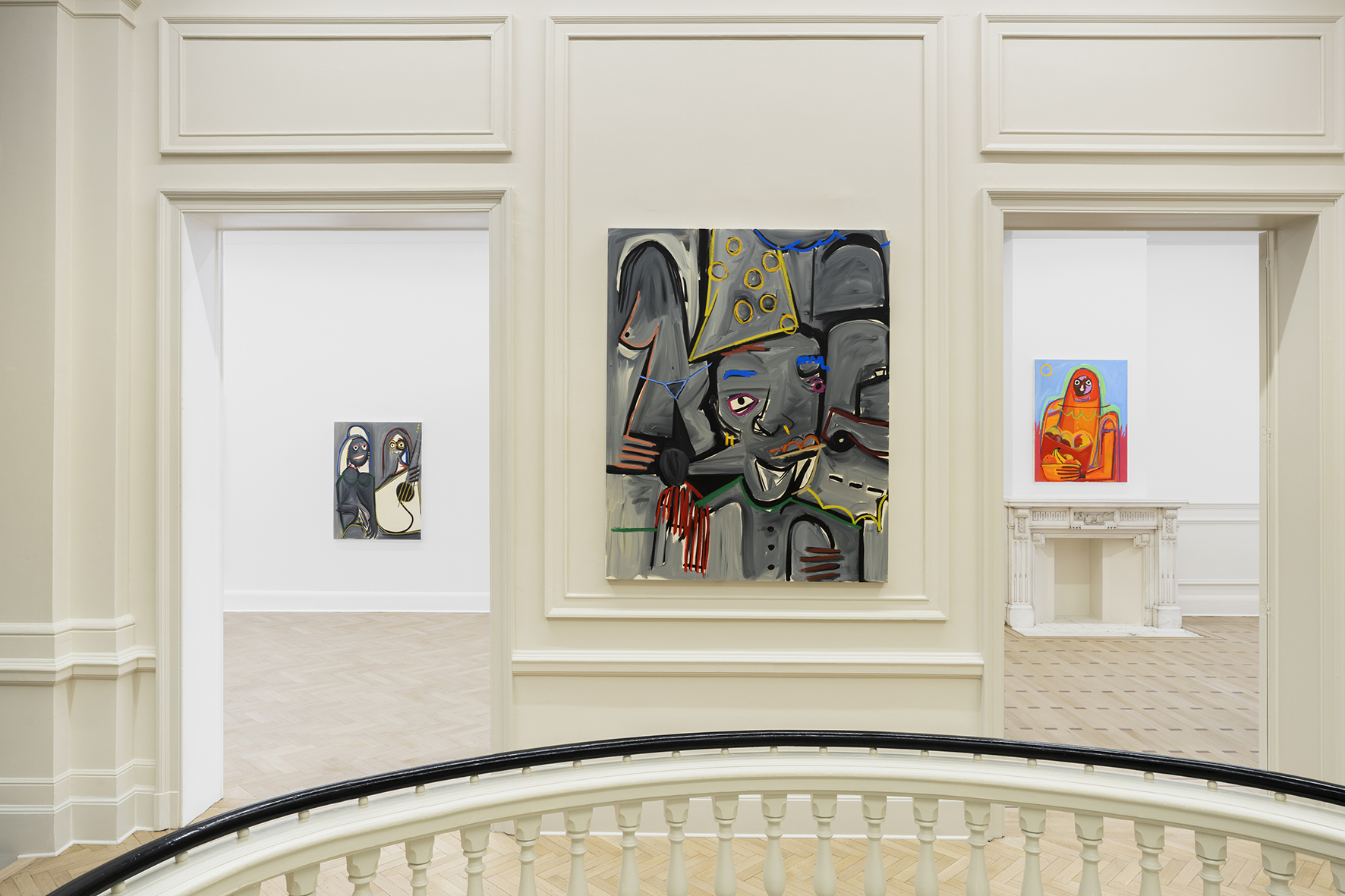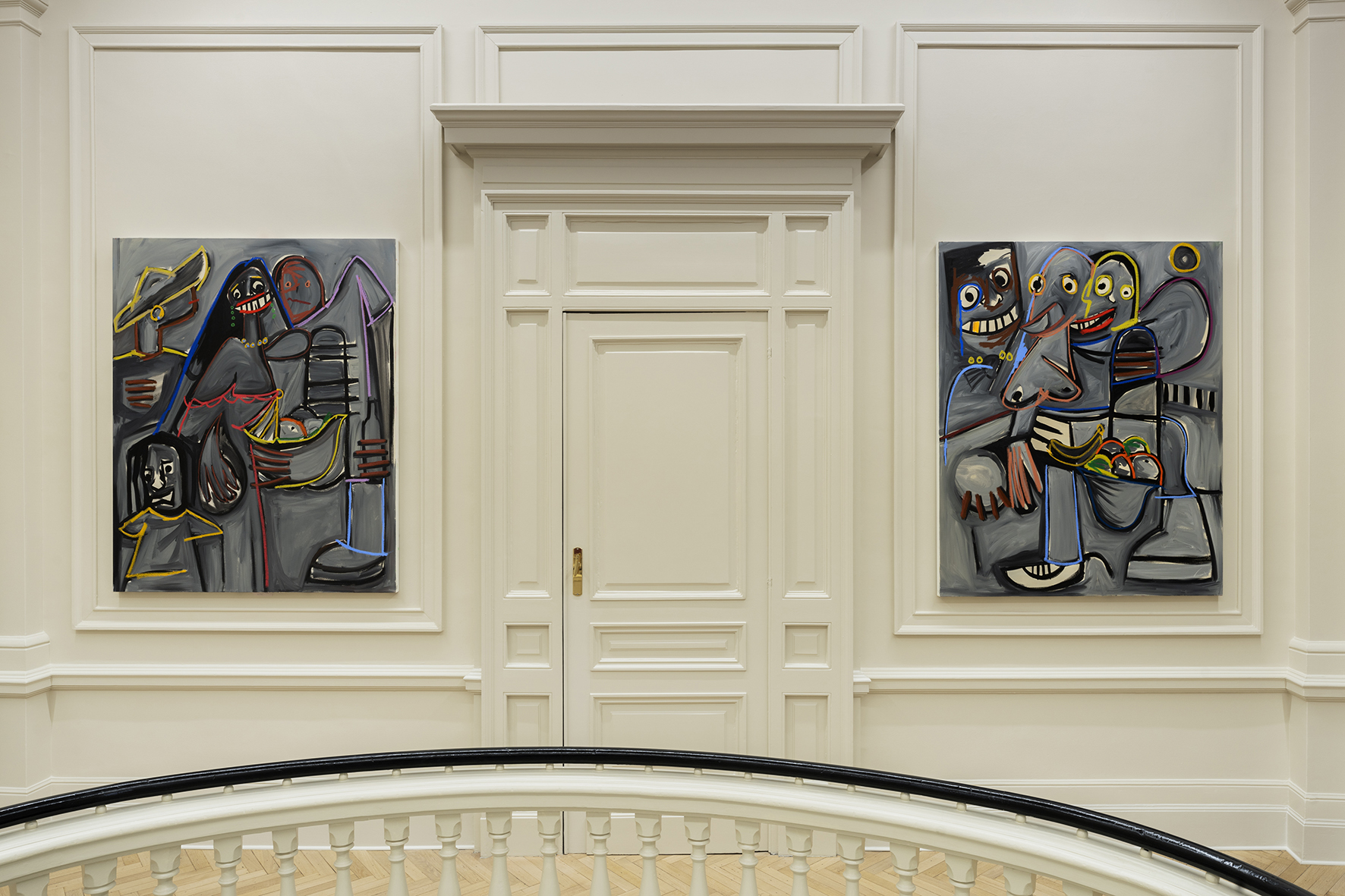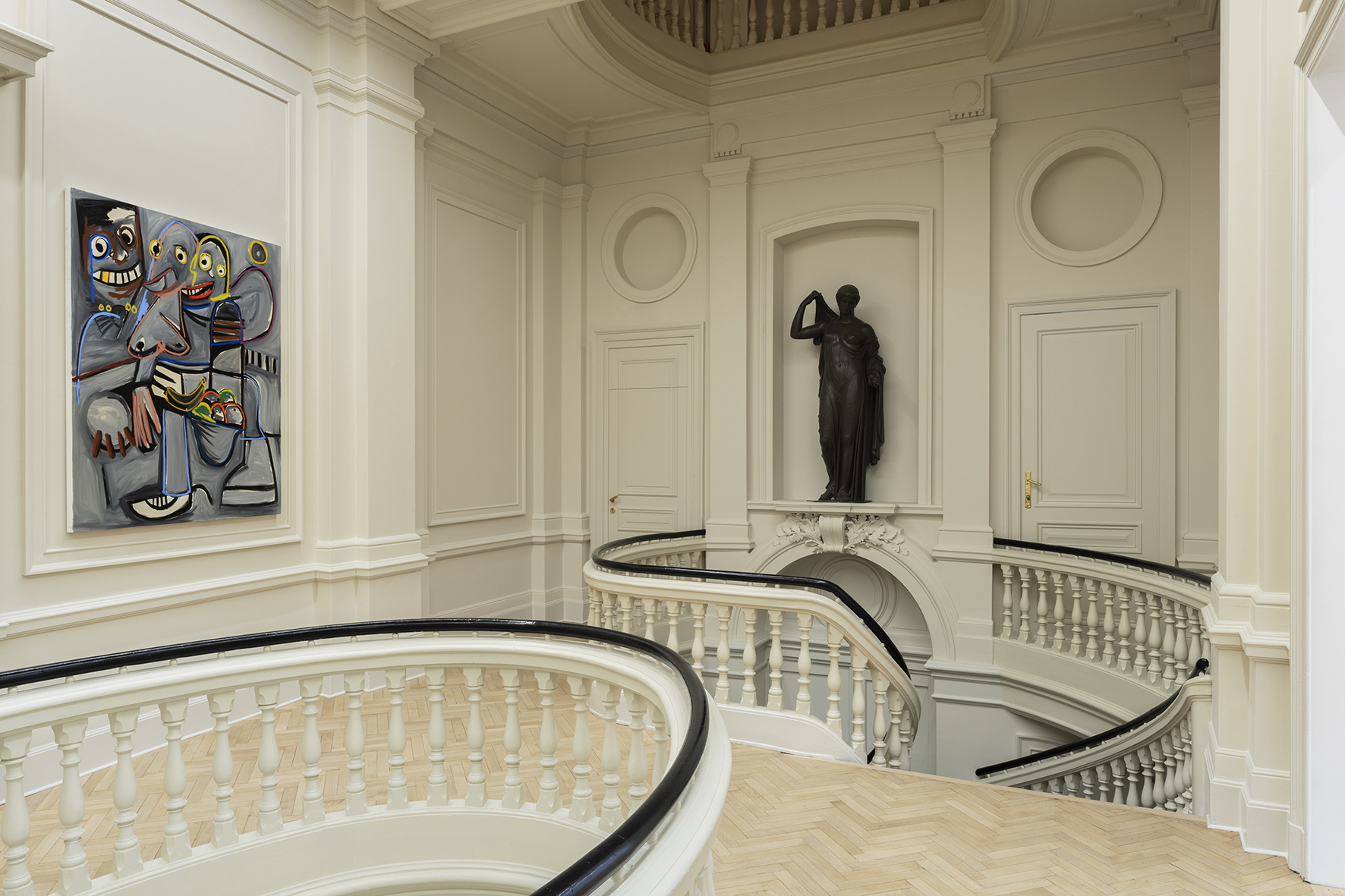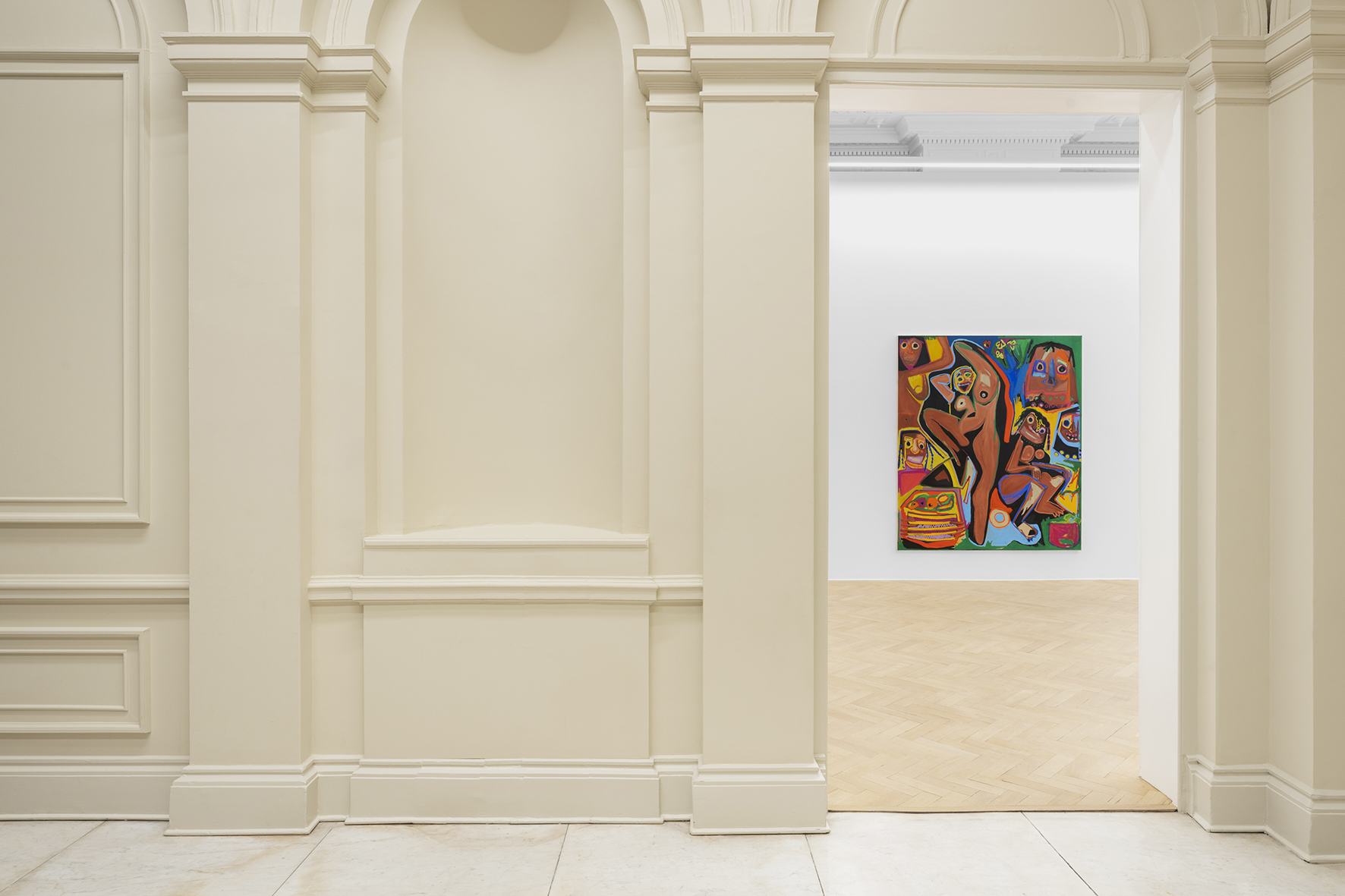
About
Milo Matthieu (b.1990, Los Angeles, CA) After graduating university with a degree in photography, Milo Matthieu has been the subject of numerous of solo including Kravets Wehby Gallery in New York (2021), The Cabin, Los Angeles (2020). He also participate to group show as Show Me The Sign Blum and Poe, Los Angeles (2020), The Great Storeroom Show, Beers Gallery, London (2019), Black and White VS Color, Richard Heller, Los Angeles (2020) . Milo Matthieu lives and work in New York
Milo Matthieu
Flowers Beyond the Sunset
Jan 13 - Mar 5, 2022
For his first exhibition in Belgium, Flowers Beyond the Sunset, artist Milo Matthieu shares his impressions of Cartagena, Colombia in a series of thirteen paintings and two sculptures. He visited the city for the first time in 2021.
"It's the technique of the Creole storyteller. He puts the parenthesis, he fills it with events, with facts that apparently have nothing to do with the main story. You can't point to reality in a linear and imperative way. You have to turn around, turn around this accumulation. This is what I call 'the art of the detour in the Creole storyteller.'" [1]
Milo Matthieu also invites us to look between the parentheses, those of his painting practice, telling us in his singular way how he borrows the world, making detours that allow him to question the interrelationships between cultures, people, language, and landscapes.
"I grew up surrounded by Haitian art in my house, and the same in my grandparents' houses - uncles, aunts, everyone hung it on the walls. But it was when I went to Haiti for the first time that I really started to appreciate the work[...] With my parents, we also went to museums, so I was exposed to old masters and contemporary artists as well, but the older I get, the more Haitian art impacts me. The more I become familiar with my own culture, the more it comes alive."
This Relation, as Édouard Glissant writes, "connects, relays, relates." [2]
Milo Matthieu says of his photographic practice, and of collage and painting: "Even though I am not a practicing photographer, I still have a great love for the medium. Now I photograph the people around me as I travel," attaching particular importance to what he calls "the feeling of familiarity," that "high degree of simplicity, of intimacy in social relationships or in the particular relationships that unite unrelated people." [3]
The artist relays the stories and narratives of anonymous people, as painters have often done, making them visible through what we can still call today genre scenes.
From Murillo to Gauguin, Lee Krasner to de Kooning, Picasso or even Maurice Sendak, Milo Matthieu is affiliated with artists who base their work on their own life experiences and thoughts. A form of research based on self-discovery, based on practices related to automatic writing, psychic automatism, and other forms of creation revealed in the West by André Breton and the surrealist movement, but which notably existed earlier in Haitian painting, with painters such as Hector Hyppolite.
Milo Matthieu relates his impressions of travels and encounters, inscribing them in a pictoriality with a classical composition. A fruit seller looking like an Italian icon (Palenqueras), hipster farmers framed in a tight shot (American Gothic), a grotesque crowned head (Flowers Beyond the Sunset).
"Grayness", a triptych barely enhanced by color, will tell us that no, misery is not less painful in the sun, that "Although the city [Cartagena] is undoubtedly beautiful, there is an austere duality. Beyond the pretty streets painted in pastel colors, there is an extreme poverty that haunts the land and many other cities in the country. Through all the celebrations, it is hard not to recognize the direct pain at the heart of the city." [4]
What impressions will Brussels and its parentheses leave on the detours of the cobblestones...?
[1]https://www.franceculture.fr/philosophie/edouard-glissant-penser-la-creolisation
[2] Édouard Glissant, Poétique de la Relation, Paris, Gallimard, 1990, p. 187.
[3] Larousse[4]Milo Matthieu, impressions of Cartagena, 2021.
